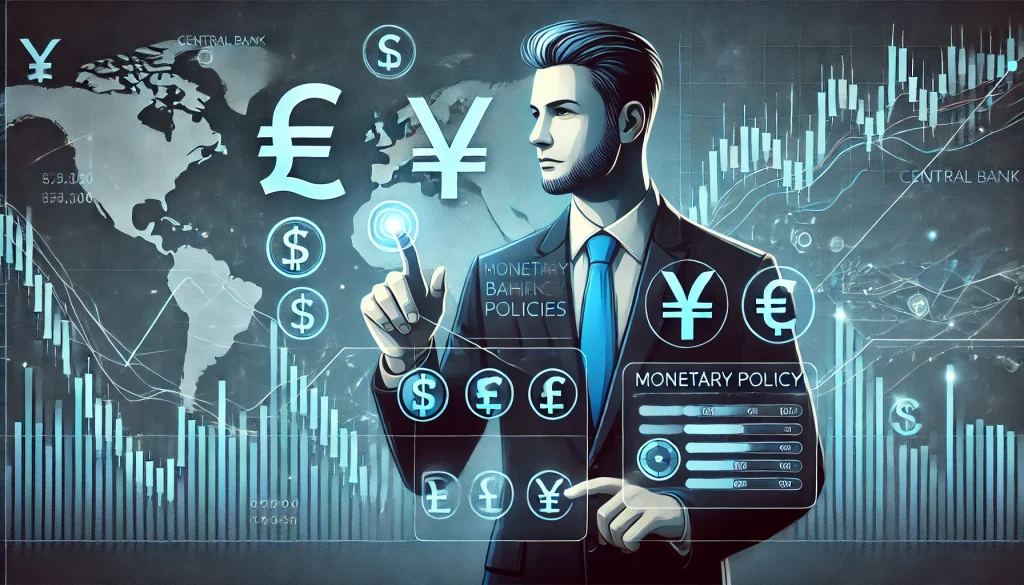
Overview
As the global economy continues to navigate turbulent times, the actions of central banks remain crucial. Whether it’s the Federal Reserve, European Central Bank (ECB), or the People’s Bank of China, central banks wield significant influence over national and international economies. Their decisions on interest rates, monetary policy, and other regulatory changes can have far-reaching consequences for businesses, consumers, and financial markets. For those closely monitoring economic trends, understanding these key policies is more important than ever.
In October 2024, the world’s central banks continue to act as stewards of economic stability amidst lingering inflationary pressures, uneven growth, and geopolitical uncertainties. The role of central banks has never been more critical. Their policy decisions impact national economies by influencing factors such as interest rates, lending conditions, and overall economic growth. With rising energy costs, labor shortages, and the lingering effects of the COVID-19 pandemic, the actions of central banks will directly affect global financial markets in the coming months.
For investors, businesses, and consumers, staying informed about central bank policies is essential. Each policy decision can shift market sentiment, impact borrowing costs, and influence currency fluctuations. As central banks navigate the delicate balance between fostering growth and containing inflation, their monetary policies will continue to play a decisive role.
Key Central Bank Policies to Watch

Understanding Central Bank Fundamentals
Before diving into specific policies, it’s essential to understand the fundamental roles that central banks play. Central banks are responsible for controlling a country’s money supply, regulating inflation, and ensuring overall economic stability. They achieve these goals through a combination of tools, including adjusting interest rates, conducting open market operations, and managing reserve requirements for commercial banks.
The core objective is to create an environment of economic stability—characterized by low inflation and sustainable growth. Central banks walk a fine line between promoting expansion and preventing overheating of the economy, which could lead to runaway inflation. As we look toward October 2024, central banks around the world are primarily focused on inflation control, a major concern that remains elevated in many regions.
Major Policies in Focus
Interest Rate Adjustments
One of the most closely watched aspects of central bank policy is the decision on interest rates. Central banks can either raise, lower, or maintain rates depending on their assessment of economic conditions. Raising rates typically helps to cool down an overheating economy and combat inflation by making borrowing more expensive. Conversely, lowering rates stimulates economic activity by making borrowing cheaper, encouraging spending and investment.
In October 2024, the key question revolves around whether central banks will continue to raise rates or adopt a more neutral stance. The Federal Reserve has indicated it may pause rate hikes if inflation shows signs of abating. Meanwhile, the European Central Bank has maintained a cautious approach, signaling a readiness to adjust rates depending on economic data. Over in China, the People’s Bank of China is opting to keep key rates steady for now, focusing instead on injecting liquidity into the financial system to boost growth amid a sluggish recovery.
The following table provides a snapshot of where major central banks stand on interest rate policies as of October 2024:
| Central Bank | Current Rate | Stance | Expected Change |
|---|---|---|---|
| Federal Reserve (US) | 5.25% | Cautious | Potential pause in hikes |
| European Central Bank (ECB) | 4.5% | Data-dependent | Possible hike |
| Bank of Japan (BoJ) | -0.1% | Accommodative | No changes anticipated |
| People’s Bank of China | 3.85% | Neutral | No immediate changes |
Quantitative Easing and Tightening
Quantitative easing (QE) refers to the practice of central banks purchasing large-scale financial assets, such as government bonds, to inject liquidity into the economy. On the other hand, quantitative tightening (QT) is when central banks reduce their balance sheets by selling off these assets, which can tighten financial conditions.
Since the 2008 financial crisis, QE has been a widely used tool to combat recessionary pressures. However, in recent years, central banks have begun to unwind their balance sheets through QT to prevent the risk of excessive liquidity driving inflation higher. In October 2024, both the Federal Reserve and European Central Bank are moving cautiously on QT, balancing the need to curb inflation without stifling economic recovery. The question for the coming months is whether inflationary pressures will prompt central banks to accelerate the pace of tightening, which could increase market volatility.
Inflation Targeting
Central banks typically aim to maintain inflation at a specific target level, often around 2%. However, inflation has remained stubbornly high in many parts of the world due to supply chain disruptions, labor shortages, and rising energy costs. As of October 2024, the Federal Reserve, ECB, and Bank of England are all grappling with inflation that exceeds their target ranges, prompting the continued use of restrictive monetary policies. The impact of these efforts will be a crucial focus for market participants in the months ahead.
Currency Intervention and Global Trade
Central banks also influence currency markets through direct or indirect interventions. For example, when a central bank raises interest rates, its currency typically strengthens, as higher rates attract foreign investment. This can impact a country’s export competitiveness and trade balance. In October 2024, currency intervention is especially relevant for economies like Japan and China, where a weaker currency helps boost exports but also raises the cost of imports, particularly energy.
Effects of Central Bank Policies

Impact on Global Markets
The actions of central banks are felt far beyond national borders. For instance, an interest rate hike by the Federal Reserve can cause a ripple effect across global financial markets, leading to a stronger U.S. dollar and tighter financial conditions for emerging markets. Similarly, the ECB’s policies influence the strength of the euro, which has a direct impact on European exports and inflation rates. As central banks across the world adjust their policies in response to economic data, market volatility is likely to persist through October 2024.
Impact on Businesses and Consumers
For businesses, central bank policies directly affect the cost of borrowing, investment decisions, and overall business confidence. When interest rates rise, borrowing becomes more expensive, which can dampen business expansion plans. Conversely, lower rates can spur investment and hiring. For consumers, higher rates mean more expensive mortgages and credit card debt, while lower rates can encourage spending. In October 2024, consumers and businesses alike will be closely watching the decisions of central banks, as these policies will have a direct impact on their financial well-being.
Conclusion
The policies of central banks are a critical component of economic stability, and their decisions in October 2024 will have far-reaching consequences. From interest rate hikes to the delicate balance of quantitative tightening, central banks are tasked with navigating a complex global landscape. Inflation remains a persistent challenge, and the direction that central banks take in the coming months will be key to shaping both national and global economies.
For those invested in the markets, it’s important to stay informed about central bank policies and their potential impact on sectors such as housing, banking, and global trade. As we look toward the future, the actions of central banks will continue to be one of the most important factors influencing economic growth and stability.
Key Takeaways
- Interest rate policies remain the most closely watched indicator for market movements.
- Central banks are using quantitative tightening to reduce inflation risks but must balance this with sustaining economic growth.
- The policies of major central banks like the Federal Reserve, ECB, and People’s Bank of China will shape the economic outlook for October 2024 and beyond.
Resources
- BIS.org. Central Bank Policies and Operations.
- Capital Economics. Global Central Bank Watch.
- Investopedia. How Central Banks Impact Interest Rates & Economy.
- Market Bulls. Impact of Central Bank Policies on Forex.
- Wall Street Journal. China’s Central Bank Keeps Key Policy Steady.
